 Whether at school, work, or running errands, it is common to see people sipping on their water bottles. This fashionable trend is a healthy one because water is essential for life. But while most people know that drinking water is good for them, many misconceptions exist about water and hydration. Learn the truth behind some of the most common hydration myths. This 4-page fact sheet was written by Lauren Caruso, Karla P. Shelnutt, and Gail Kauwell, and published by the UF Department of Family Youth and Community Sciences, August 2014.
Whether at school, work, or running errands, it is common to see people sipping on their water bottles. This fashionable trend is a healthy one because water is essential for life. But while most people know that drinking water is good for them, many misconceptions exist about water and hydration. Learn the truth behind some of the most common hydration myths. This 4-page fact sheet was written by Lauren Caruso, Karla P. Shelnutt, and Gail Kauwell, and published by the UF Department of Family Youth and Community Sciences, August 2014.
http://edis.ifas.ufl.edu/fy1409
Category: Families & Consumers
Bullying Related to Lack of Time with Dad
 It’s a bad feeling for any parent: the sinking realization that your child has been teasing or even harming other children. No one wants to be the parent of a bully. Yet many are, given that more than a third of children in grades K through 8 report being bullied. This 2-page Family Album Radio transcript was written by Carol Church, and published by the UF Department of Family Youth and Community Sciences, August 2014.
It’s a bad feeling for any parent: the sinking realization that your child has been teasing or even harming other children. No one wants to be the parent of a bully. Yet many are, given that more than a third of children in grades K through 8 report being bullied. This 2-page Family Album Radio transcript was written by Carol Church, and published by the UF Department of Family Youth and Community Sciences, August 2014.
http://edis.ifas.ufl.edu/fm1143
The Food Safety Modernization Act of 2011 – Proposed Rule for Preventive Controls for Human Food
 The Food Safety Modernization Act (FSMA), which was signed into law by President Obama on January 4, 2011, is the most sweeping reform of food safety laws in more than 70 years since the enactment of the Federal Food, Drug and Cosmetic Act of 1938. High-profile foodborne outbreaks in the last decade and their impact on public health and the economy have exposed the need for a new, modern food safety system. FSMA aims to ensure the safety and security of the US food supply by focusing on preventing food safety problems rather than responding after they occur. This law provides the FDA with new enforcement authorities to achieve a higher rate of compliance with food safety standards and to respond better to problems. This 5-page fact sheet was written by Soohyoun Ahn, Keith R. Schneider, Michelle D. Danyluk, and Renee Goodrich-Schneider, and published by the UF Department of Food Science and Human Nutrition, April 2014.
The Food Safety Modernization Act (FSMA), which was signed into law by President Obama on January 4, 2011, is the most sweeping reform of food safety laws in more than 70 years since the enactment of the Federal Food, Drug and Cosmetic Act of 1938. High-profile foodborne outbreaks in the last decade and their impact on public health and the economy have exposed the need for a new, modern food safety system. FSMA aims to ensure the safety and security of the US food supply by focusing on preventing food safety problems rather than responding after they occur. This law provides the FDA with new enforcement authorities to achieve a higher rate of compliance with food safety standards and to respond better to problems. This 5-page fact sheet was written by Soohyoun Ahn, Keith R. Schneider, Michelle D. Danyluk, and Renee Goodrich-Schneider, and published by the UF Department of Food Science and Human Nutrition, April 2014.
http://edis.ifas.ufl.edu/fs248
Keeping it Clean: Plan Your Cleaning
 This 1-page fact sheet lists the things you should clean as you go, those tasks you should do immediately, and tasks to do less often. Written by Mary N. Harrison, Amanda Griffin, and Randall A. Cantrell, and published by the UF Department of Family Youth and Community Sciences, May 2014.
This 1-page fact sheet lists the things you should clean as you go, those tasks you should do immediately, and tasks to do less often. Written by Mary N. Harrison, Amanda Griffin, and Randall A. Cantrell, and published by the UF Department of Family Youth and Community Sciences, May 2014.
http://edis.ifas.ufl.edu/fy787
Keeping It Clean: A Healthy House
 The way you clean and maintain your home will affect the health of your family, especially children. The incidence of children diagnosed with asthma is increasing. You can help make your home safe and healthy for your children by eliminating or controlling the risks outlined in this publication. This 2-page fact sheet was written by Mary N. Harrison, Amanda Griffin, and Randall A. Cantrell, and published by the UF Department of Family Youth and Community Sciences, May 2014.
The way you clean and maintain your home will affect the health of your family, especially children. The incidence of children diagnosed with asthma is increasing. You can help make your home safe and healthy for your children by eliminating or controlling the risks outlined in this publication. This 2-page fact sheet was written by Mary N. Harrison, Amanda Griffin, and Randall A. Cantrell, and published by the UF Department of Family Youth and Community Sciences, May 2014.
http://edis.ifas.ufl.edu/fy786
Keeping it Clean: Controlling Mildew
 Mildew is a mold that can grow and cause damage to your health and home. The concern about mildew is that it is believed to contribute to respiratory problems, like asthma, especially in children. This 1-page fact sheet provides tips for preventing mildew and for getting rid of it. Written by Mary N. Harrison, Randall A. Cantrell, and Amanda Griffin, and published by the UF Department of Family Youth and Community Sciences, May 2014.
Mildew is a mold that can grow and cause damage to your health and home. The concern about mildew is that it is believed to contribute to respiratory problems, like asthma, especially in children. This 1-page fact sheet provides tips for preventing mildew and for getting rid of it. Written by Mary N. Harrison, Randall A. Cantrell, and Amanda Griffin, and published by the UF Department of Family Youth and Community Sciences, May 2014.
http://edis.ifas.ufl.edu/fy796
Datos sobre los antioxidantes
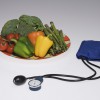 Nuestro cuerpo está constituido de células. Dentro de éstas ocurren constantemente reacciones químicas, que se conocen colectivamente como metabolismo. Estas reacciones son necesarias para la vida, pero algunas veces crean radicales libres. Los radicales libres son moléculas altamente reactivas que pueden iniciar reacciones dañinas en cadena en nuestras células. Esto se conoce como estrés oxidativo. Diversas investigaciones relacionan el estrés oxidativo con muchas enfermedades: artritis, enfermedades de los pulmones (como enfisema), enfermedades del corazón, enfermedad cerebro vascular, ulceras, hipertensión, Parkinson y Altzheimer, distrofia muscular y otras. El estrés oxidativo también contribuye al proceso normal de envejecimiento. This 3-page fact sheet is the Spanish language version of Facts about Antioxidants, written by Kaitlin G. Clark and Wendy J. Dahl, and published by the UF Department of Food Science and Human Nutrition, July 2014.
Nuestro cuerpo está constituido de células. Dentro de éstas ocurren constantemente reacciones químicas, que se conocen colectivamente como metabolismo. Estas reacciones son necesarias para la vida, pero algunas veces crean radicales libres. Los radicales libres son moléculas altamente reactivas que pueden iniciar reacciones dañinas en cadena en nuestras células. Esto se conoce como estrés oxidativo. Diversas investigaciones relacionan el estrés oxidativo con muchas enfermedades: artritis, enfermedades de los pulmones (como enfisema), enfermedades del corazón, enfermedad cerebro vascular, ulceras, hipertensión, Parkinson y Altzheimer, distrofia muscular y otras. El estrés oxidativo también contribuye al proceso normal de envejecimiento. This 3-page fact sheet is the Spanish language version of Facts about Antioxidants, written by Kaitlin G. Clark and Wendy J. Dahl, and published by the UF Department of Food Science and Human Nutrition, July 2014.
http://edis.ifas.ufl.edu/fs251
Datos sobre los Carbohidratos
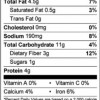 Los carbohidratos, grasas y proteínas son los tres nutrientes que proveen energía (calorías). Sin embargo, los carbohidratos como los almidones y azúcares son la fuente más importante y principal de energía. Durante la digestión, el almidón se rompe en azúcares (glucosa). Los carbohidratos en forma de glucosa proveen energía a las células, tejidos y órganos para llevar a cabo las actividades diarías. Alguna glucosa se almacena en el hígado y células de los músculos para usarla cuando se requiera. Los niños necesitan carbohidratos para el crecimiento y los adultos necesitan para mantener el peso. This 3-page fact sheet is the Spanish language version of Facts about Carbohydrate, written by Nancy J. Gal, Amanda L. Ford and Wendy J. Dahl, and published by the UF Department of Food Science and Human Nutrition, July 2014.
Los carbohidratos, grasas y proteínas son los tres nutrientes que proveen energía (calorías). Sin embargo, los carbohidratos como los almidones y azúcares son la fuente más importante y principal de energía. Durante la digestión, el almidón se rompe en azúcares (glucosa). Los carbohidratos en forma de glucosa proveen energía a las células, tejidos y órganos para llevar a cabo las actividades diarías. Alguna glucosa se almacena en el hígado y células de los músculos para usarla cuando se requiera. Los niños necesitan carbohidratos para el crecimiento y los adultos necesitan para mantener el peso. This 3-page fact sheet is the Spanish language version of Facts about Carbohydrate, written by Nancy J. Gal, Amanda L. Ford and Wendy J. Dahl, and published by the UF Department of Food Science and Human Nutrition, July 2014.
http://edis.ifas.ufl.edu/fs250
Datos sobre los flavonoides
 Los flavonoides son compuestos orgánicos que se encuentran naturalmente en plantas. Existen en la naturaleza más de 5 mil compuestos flavonoides, aquellos que se encuentran en las comidas caen en seis categorías: flavonoles, antocianinas, iso-flavonoides, flavan-3 oles, flavonas y flavanonas. Los compuestos en estas categorías son de interés por los beneficios potenciales sobre la salud. The English version of this document is Facts about Flavonoids. This 4-page fact sheet was written by Inbar Schapsis y Wendy J. Dahl, and published by the UF Department of Food Science and Human Nutrition, July 2014.
Los flavonoides son compuestos orgánicos que se encuentran naturalmente en plantas. Existen en la naturaleza más de 5 mil compuestos flavonoides, aquellos que se encuentran en las comidas caen en seis categorías: flavonoles, antocianinas, iso-flavonoides, flavan-3 oles, flavonas y flavanonas. Los compuestos en estas categorías son de interés por los beneficios potenciales sobre la salud. The English version of this document is Facts about Flavonoids. This 4-page fact sheet was written by Inbar Schapsis y Wendy J. Dahl, and published by the UF Department of Food Science and Human Nutrition, July 2014.
http://edis.ifas.ufl.edu/fs249
Understanding the Changes to the Patient’s Bill of Rights as a Result of the Affordable Care Act
 The Affordable Care Act is a legislative act that has provided individuals and families more choices related to healthcare insurances. It offers consumers new protections and benefits by creating a more defined Patient’s Bill of Rights. This 2-page fact sheet was written by Deanna Andrews and Martie Gillen, and published by the UF Department of Family Youth and Community Sciences, May 2014.
The Affordable Care Act is a legislative act that has provided individuals and families more choices related to healthcare insurances. It offers consumers new protections and benefits by creating a more defined Patient’s Bill of Rights. This 2-page fact sheet was written by Deanna Andrews and Martie Gillen, and published by the UF Department of Family Youth and Community Sciences, May 2014.
http://edis.ifas.ufl.edu/fy1410
Healthy Living: Diabetes Warning Signs
 Could you have diabetes and not know it? It is possible. More than one-fourth of the people who have diabetes don’t know they have the disease! Treating and managing diabetes greatly decreases the risk of diabetes-related health problems. Review the list of warning signs below and check any that you have experienced. This 2-page fact sheet was written by Linda B. Bobroff, and published by the UF Department of Family Youth and Community Sciences, July 2014.
Could you have diabetes and not know it? It is possible. More than one-fourth of the people who have diabetes don’t know they have the disease! Treating and managing diabetes greatly decreases the risk of diabetes-related health problems. Review the list of warning signs below and check any that you have experienced. This 2-page fact sheet was written by Linda B. Bobroff, and published by the UF Department of Family Youth and Community Sciences, July 2014.
http://edis.ifas.ufl.edu/fy084
Facts about Quinoa
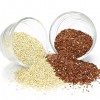 The U.S. Department of Agriculture’s MyPlate nutrition guide recommends that Americans consume half of their grains from whole grain foods. Whole wheat bread and oatmeal are whole grain foods that are familiar to most Americans, but lots of other whole grain foods are also available. An example of an unfamiliar whole grain food is quinoa (pronounced keen-wa). Quinoa is a nutritious seed that is simple to prepare. It can be served as a hot cereal or side dish, as a cold salad similar to pasta salad, or it can be used in recipes in place of rice or other grains. It also has the advantage of being gluten free, which is a must for people diagnosed with celiac disease. Follow the link to learn more about quinoa and what it has to offer. This 3-page fact sheet was written by Alexandra Dati, Gail Kauwell, and Amy Simonne, and published by the UF Department of Family Youth and Community Sciences, May 2014.
The U.S. Department of Agriculture’s MyPlate nutrition guide recommends that Americans consume half of their grains from whole grain foods. Whole wheat bread and oatmeal are whole grain foods that are familiar to most Americans, but lots of other whole grain foods are also available. An example of an unfamiliar whole grain food is quinoa (pronounced keen-wa). Quinoa is a nutritious seed that is simple to prepare. It can be served as a hot cereal or side dish, as a cold salad similar to pasta salad, or it can be used in recipes in place of rice or other grains. It also has the advantage of being gluten free, which is a must for people diagnosed with celiac disease. Follow the link to learn more about quinoa and what it has to offer. This 3-page fact sheet was written by Alexandra Dati, Gail Kauwell, and Amy Simonne, and published by the UF Department of Family Youth and Community Sciences, May 2014.
http://edis.ifas.ufl.edu/fy1408
Dealing with Food Allergies
 A food allergy is an immune system reaction that happens after a person consumes what is normally considered a safe food. Food allergies occur more often in children than in adults: 4%–8% of those aged 4 or under and about 2% of adults are affected. Allergic reactions from food have led to over 20,000 emergency room visits per year. Annually, between 150 and 200 fatalities associated with food allergic reactions occur in the United States. This 4-page fact sheet was written by Keith R. Schneider, Renée Goodrich Schneider, Soohyoun Ahn, and Susie Richardson, and published by the UF Department of Food Science and Human Nutrition, January 2014.
A food allergy is an immune system reaction that happens after a person consumes what is normally considered a safe food. Food allergies occur more often in children than in adults: 4%–8% of those aged 4 or under and about 2% of adults are affected. Allergic reactions from food have led to over 20,000 emergency room visits per year. Annually, between 150 and 200 fatalities associated with food allergic reactions occur in the United States. This 4-page fact sheet was written by Keith R. Schneider, Renée Goodrich Schneider, Soohyoun Ahn, and Susie Richardson, and published by the UF Department of Food Science and Human Nutrition, January 2014.
http://edis.ifas.ufl.edu/fs123
Dealing with a Florida Winter Weather Event
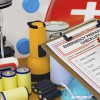 People in Florida might not consider planning and preparing for winter weather events because of its normally mild temperatures. However, some northern Florida regions experience temperatures below freezing and occasional snow and ice storms during the winter months. These storm events can be dangerous and even deadly. These simple safety reminders can help you and your family be better prepared for Florida’s winter weather events. This 3-page fact sheet was written by Randall Cantrell, Judy Corbus, and Michael Spranger, and published by the UF Department of Family Youth and Community Sciences, April 2014.
People in Florida might not consider planning and preparing for winter weather events because of its normally mild temperatures. However, some northern Florida regions experience temperatures below freezing and occasional snow and ice storms during the winter months. These storm events can be dangerous and even deadly. These simple safety reminders can help you and your family be better prepared for Florida’s winter weather events. This 3-page fact sheet was written by Randall Cantrell, Judy Corbus, and Michael Spranger, and published by the UF Department of Family Youth and Community Sciences, April 2014.
http://edis.ifas.ufl.edu/fy1407
An Introduction to Annuities
 An annuity contract is purchased from a life insurance company. The individual gives the insurance company a lump-sum payment or a series of payments. In return, the company will provide a stream of payments to the individual. Although an annuity is purchased from a life insurance company, it serves a different purpose than life insurance. Below is a chart comparing life insurance to annuities.
An annuity contract is purchased from a life insurance company. The individual gives the insurance company a lump-sum payment or a series of payments. In return, the company will provide a stream of payments to the individual. Although an annuity is purchased from a life insurance company, it serves a different purpose than life insurance. Below is a chart comparing life insurance to annuities.
This 4-page fact sheet was written by Michael S. Gutter and Lisa Leslie, and published by the UF Department of Family Youth and Community Sciences, March 2014.
http://edis.ifas.ufl.edu/fy1406
Mejorando la efectividad de un programa profesional para el manejo de plagas
 El propósito de esta guía es proporcionar información que permita optimizar el control de plagas en el entorno del hogar cuando se trabaja con un operador profesional para el control de plagas. This 2-page fact sheet is a Spanish language translation of Enhancing the Effectiveness of a Professional Pest Management Program, written by Frederick M. Fishel and Tatiana Sanchez, and published by the UF Department of Agronomy, March 2014.
El propósito de esta guía es proporcionar información que permita optimizar el control de plagas en el entorno del hogar cuando se trabaja con un operador profesional para el control de plagas. This 2-page fact sheet is a Spanish language translation of Enhancing the Effectiveness of a Professional Pest Management Program, written by Frederick M. Fishel and Tatiana Sanchez, and published by the UF Department of Agronomy, March 2014.
http://edis.ifas.ufl.edu/pi252
Los ninos y los pesticidas
 Los niños actúan rápido, pero también lo hacen los venenos, incluidos los pesticidas. Afortunadamente para la mayoría de los padres, sus hijos no son perjudicados cuando los padres tienen un lapso momentáneo y no los supervisan por un corto tiempo. Pero ¿cómo responderían los padres si de repente se dan la vuelta, y su niño está sosteniendo una lata de aerosol con insecticida para el hogar? Esta publicación describe algunos hechos y medidas de precaución con respecto a los niños y los pesticidas en el ambiente del hogar, para que los padres tengan una mejor idea de cómo mantener productos químicos dañinos lejos de sus hijos.
Los niños actúan rápido, pero también lo hacen los venenos, incluidos los pesticidas. Afortunadamente para la mayoría de los padres, sus hijos no son perjudicados cuando los padres tienen un lapso momentáneo y no los supervisan por un corto tiempo. Pero ¿cómo responderían los padres si de repente se dan la vuelta, y su niño está sosteniendo una lata de aerosol con insecticida para el hogar? Esta publicación describe algunos hechos y medidas de precaución con respecto a los niños y los pesticidas en el ambiente del hogar, para que los padres tengan una mejor idea de cómo mantener productos químicos dañinos lejos de sus hijos.
This 3-page fact sheet is a Spanish-language translation of Children and Pesticides, written by Frederick M. Fishel and Tatiana Sánchez, and published by the UF Department of Agronomy, March 2014.
http://edis.ifas.ufl.edu/pi250
Healthy Living: Food Can Affect Your Medicines
 Do the foods you eat affect the way your medicines work? It’s very possible. Certain foods can affect the way prescription and over-the-counter medicines work by delaying, decreasing, or enhancing how much of the drug is absorbed by the body. This can cause unwanted and harmful side effects. Follow the information in this 2-page fact sheet to reduce your risk of common food and drug interactions. Written by Paulina Wittkowsky and Linda B. Bobroff, and published by the UF Department of Family Youth and Community Sciences, May 2014.
Do the foods you eat affect the way your medicines work? It’s very possible. Certain foods can affect the way prescription and over-the-counter medicines work by delaying, decreasing, or enhancing how much of the drug is absorbed by the body. This can cause unwanted and harmful side effects. Follow the information in this 2-page fact sheet to reduce your risk of common food and drug interactions. Written by Paulina Wittkowsky and Linda B. Bobroff, and published by the UF Department of Family Youth and Community Sciences, May 2014.
http://edis.ifas.ufl.edu/fy676
MyPlate “10 Tips” Nutrition Education series
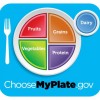 After introducing MyPlate in June 2011, USDA provided a series of one-page fact sheets to help consumers use the dietary advice of the Dietary Guidelines 2010. The USDA added new fact sheets in December 2011 and continued adding fact sheets in 2012, 2013, and 2014. These fact sheets are distributed by UF/IFAS Extension for Extension faculty, health professionals, and consumers. They are also called the “Ten Tips Nutrition Education Series” and “DG TipSheets”
After introducing MyPlate in June 2011, USDA provided a series of one-page fact sheets to help consumers use the dietary advice of the Dietary Guidelines 2010. The USDA added new fact sheets in December 2011 and continued adding fact sheets in 2012, 2013, and 2014. These fact sheets are distributed by UF/IFAS Extension for Extension faculty, health professionals, and consumers. They are also called the “Ten Tips Nutrition Education Series” and “DG TipSheets”
New in 2014:
- 32. Make Healthier Holiday Choices
- 33. Men’s Health: Get the Facts to Feel and Look Better
- 34. Teen Guys: Choose the Foods You Need To Grow
- 35. Women’s Health: Make Better Food Choices
- 36. Teen Girls: Eat Smart and Be Active As You Grow
- 37. Save More at the Grocery Store
http://edis.ifas.ufl.edu/topic_myplate_nutrition_education_series
Preventing Foodborne Illness Associated with Clostridium perfringens
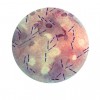 This is one in a series of fact sheets discussing common foodborne pathogens of interest to food handlers, processors, and retailers. This 5-page fact sheet was written by Keith R. Schneider, Renée Goodrich-Schneider, Michael A. Hubbard, and Susanna Richardson, and published by the UF Department of Food Science and Human Nutrition, January 2014.
This is one in a series of fact sheets discussing common foodborne pathogens of interest to food handlers, processors, and retailers. This 5-page fact sheet was written by Keith R. Schneider, Renée Goodrich-Schneider, Michael A. Hubbard, and Susanna Richardson, and published by the UF Department of Food Science and Human Nutrition, January 2014.
http://edis.ifas.ufl.edu/fs101